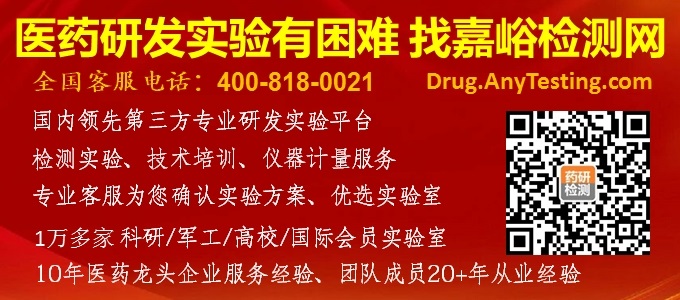您当前的位置:检测资讯 > 科研开发
嘉峪检测网 2021-12-16 20:25
Manufacturers should conduct inspection feasibilitystudies for visible particulate detectability, unit inspection duration,illumination, and fatigue time frame. These studies should be scientificallybased and analyzed using appropriate statistical methodology. Depending on thestudy results, manufacturers may need to adjustparticulate standards or inspection processes or, in some cases, changeequipment to improve accuracy and reduce patient risk.
制造商应进行可见颗粒可检测性、单位检查持续时间、照明和疲劳时间框架的检查可行性研究。这些研究应以科学为基础,并使用适当的统计方法进行分析。根据研究结果,制造商可能需要调整颗粒标准或检查过程,或者在某些情况下更换设备以提高准确性并降低患者风险。
Manufacturers must implement written procedures forproduction and process controls (§ 211.100), which should cover each aspect ofthe visual inspection process. Such procedures should cover handling of theunits (e.g., swirling, inversion, distance from light), maximum length of theinspection period without a rest break, and disposition and documentation ofproducts that were rejected based on the results of the visual inspection.
制造商必须实施书面的生产和过程控制程序(§ 211.100),其中应涵盖目视检查过程的各个方面。这些程序应包括对被检查单元的处理(例如,旋转、反转、与光的距离)、无休息不间断检查的最长时长,以及根据目视检查结果对被拒绝的产品进行处置和记录。
Only certified inspectors and qualifiedequipment should be used to inspect injectable products for visible particulates.Personnel conducting inspections (100% inspection and AQL inspection) must beadequately trained (including, as appropriate, periodic retraining or requalification)(§§ 211.25 and 600.10(b)).
只有经认证的检查人员和已确认的设备才能用于检查注射产品的可见颗粒。进行检查(100%检查和AQL检查)的人员必须经过充分的培训(包括适当的定期再培训或再确认)(§§ 211.25和600.10(b))。
Formalized training and qualificationprograms promote consistent performance by individual inspectors or automatedinspection machines and help minimize variability among different inspectors ormachines (Melchore 2011). The program can include a combination of trainingmaterials, standard operating procedures (SOPs), on-the-job training, andtesting. Inspector candidates should be trained in the relevant CGMPrequirements and should have normal near visual acuity (with or without the useof corrective lenses) and no impairment of color vision (Ricci et al. 1998).
正式的培训和确认程序促进了检查人员或自动检查机的一致性能,并有助于最大限度地减少不同检查人员或机器之间的可变性(Melchore 2011)。培训的程序可以包括培训材料,标准操作程序(SOP),岗位培训和测试的组合。准检查人员应接受相关CGMP要求的培训,并且应具有正常的近距视敏度(无论是否使用矫正镜片)并且没有色觉障碍。
Regarding inspection equipment:
关于检查设备:
The specific backdrop and light intensity selected for manual inspection stations should be qualified.
为人工检查站选择的特定的背景和光强应进行确认。
Semi-automated inspection equipment shouldbe properly calibrated and qualified at a specific vial-spin and belt speed.Lighting should also be qualified to allow for accurate human detection ofdefective products.
半自动检查设备应在特定的瓶子旋转速度和传送带速度下进行适当校准和确认。照明应进行确认以对缺陷产品进行准确的人工检测。
Automated inspection machines should bevalidated to meet or surpass human inspection capabilities and can be qualifiedusing training standards or artificial intelligence technology.
自动检查设备应经过验证,以达到或超过人工检测能力,并可以使用培训标准或人工智能技术进行确认。
For personnel qualification and automatedinspection systems validation, a mixture of good injectable product units anddefective units containing visible particulates should be used (Melchore 2011).This test set should be prepared and approved by quality assurance staff.Manufacturers should develop libraries of defective units from samplescollected throughout the product life cycle, samples created to simulateproduction defects, or samples purchased to be representative of the types ofparticulates likely to occur for the drug product and its manufacturingprocess. Quality assurance staff should review the library of defective samples and compare the samples to established standards for proper classification. Thelibrary should contain examples from the lower limits of visual detectiondetermined in the threshold studies. If a new particulate matter defect isidentified, it should be analyzed to determine its source and added to thetraining library.
对于人员确认和自动检查系统的验证,应使用合格的注射产品单元和含有可见颗粒的缺陷单元的混合作为测试集(Melchore 2011)。该测试集应由质量保证人员准备和批准。制造商应从整个产品生命周期中收集的缺陷样品、为模拟生产缺陷而创建的样品或为代表药品及其制造过程中可能发生的颗粒类型而购买的样品中开发缺陷库。QA人员应审核缺陷样品库,并将样品与已建立的标准进行比较,以便进行适当的分类。该缺陷库应包含阈值研究中确定的视觉检测下限的示例。如果发现新的颗粒缺陷类型,应对其进行分析以确定其来源并将其添加到培训库中。
Typically, the percentage of defectiveunits in a test set should not exceed 10–20 percent, and the test set quantitiesshould be sufficient to provide an adequate degree of confidence in the test results.Trained inspectors should review defective units before they are included inthe test set to determine if the visible particulates in them can be detectedunder normal conditions, and the identity of defective units should be maskedto test subjects. The quality unit should control the test sets to ensure thatqualification tests are not manipulated or biased.
通常,测试集中缺陷单元的百分比不应超过10–20%,并且测试集数量应足以在测试结果中提供足够的置信度。经培训的检查人员应在缺陷单元纳入测试集之前对其进行检查,以确定在正常条件下是否可以检测到其中的可见颗粒,并且应向测试对象掩盖缺陷单元的身份。质量部门应控制测试集,以确保确认测试不受操纵或偏颇。
The quality unit should also establish andapprove qualification protocols that identify the sample test sets, testduration, grading method for test results, documentation of test results,acceptance criteria for certification, and actions to be taken for testfailures. The protocols should also specify requalification testing methods andfrequency.
质量部门还应建立和批准确认方案,以确定样品测试集,测试持续时间,测试结果的分级方法,测试结果的文件,认证的接受标准以及测试失败应采取的行动。方案还应规定再确认测试的方法和频率。

来源:GMP办公室


